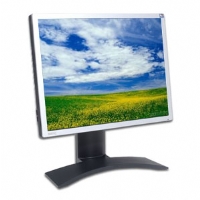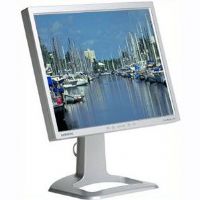Cheap Computer Monitors

The computer monitor is the thing you stare at all day as you work on your computer. Because of this, choosing the right monitor can make a big difference to the strain experienced by your eyes when working, and the quality of the images you see on the screen.
There used to be very little option when getting a monitor, but there are getting to be more choices, which apart from giving you more choice makes it that little bit harder to choose the right one for your application.
This guide will give you enough information to make sure you get the monitor that best fits your needs, the applications you use, where you use it and most importantly is as light on your wallet as possible.
So what should I be looking for?
It used to be a fairly simple process to find the monitor that is best, but with the option of getting a CRT or LCD monitor and beyond that the quality and function of the monitor in question there becomes a lot more to consider. We will go over these to give you a good idea of what to keep your eyes open for.
We will look at whether you should get an LCD or CRT monitor, how to choose the best design of monitor, how good the monitor’s internal parts are, how well it produces colors, how uniform the colors are, latency and choosing the monitor that will meet the screen resolution you need and refresh rates.
If this seems like a bit much to take in, don’t worry we will go through each aspect clearly to make sure you know what to look out for.
Should I get an LCD or CRT?

Firstly let me explain the difference…
The old style monitor is the CRT. This stands for Cathode Ray Tube, which is the big thing inside the monitor that produces the picture. This kind of monitor is still the cheapest, but is bigger and heavier than LCD monitors. LCD monitors are dropping in price though, bringing them closer to the price of the older style monitors.
The newer, flatter monitors are LCD. This stands for Liquid Crystal Display and refers to the way the image is produced on the screen. These are generally about twice the price of CRT monitors, but offer other advantages like being more crisp, and not flickering at low refresh rates.
More recently the prices of LCD monitors have dropped dramatically. What I paid for a flat 19 inch CRT two years ago can now buy a 19 inch LCD monitor.
The most noticable difference is just in terms of style. The flat screen is much better for saving space on your table or desk, giving more room for other stuff. It is also much nicer to look at, that slim style gives it a more modern look.
There are drawbacks to LCD monitors though. Although CRT monitors all do fairly well, there is a huge range of quality to be found in flat screen monitors, some of the worst being almost unusable in reality. The best ones come at a high price. They also suffer from high latency, meaning that it takes a long time for the picture to come onto the screen. This is a serious issue for gamers, but not too serious for a desktop or workstation.









